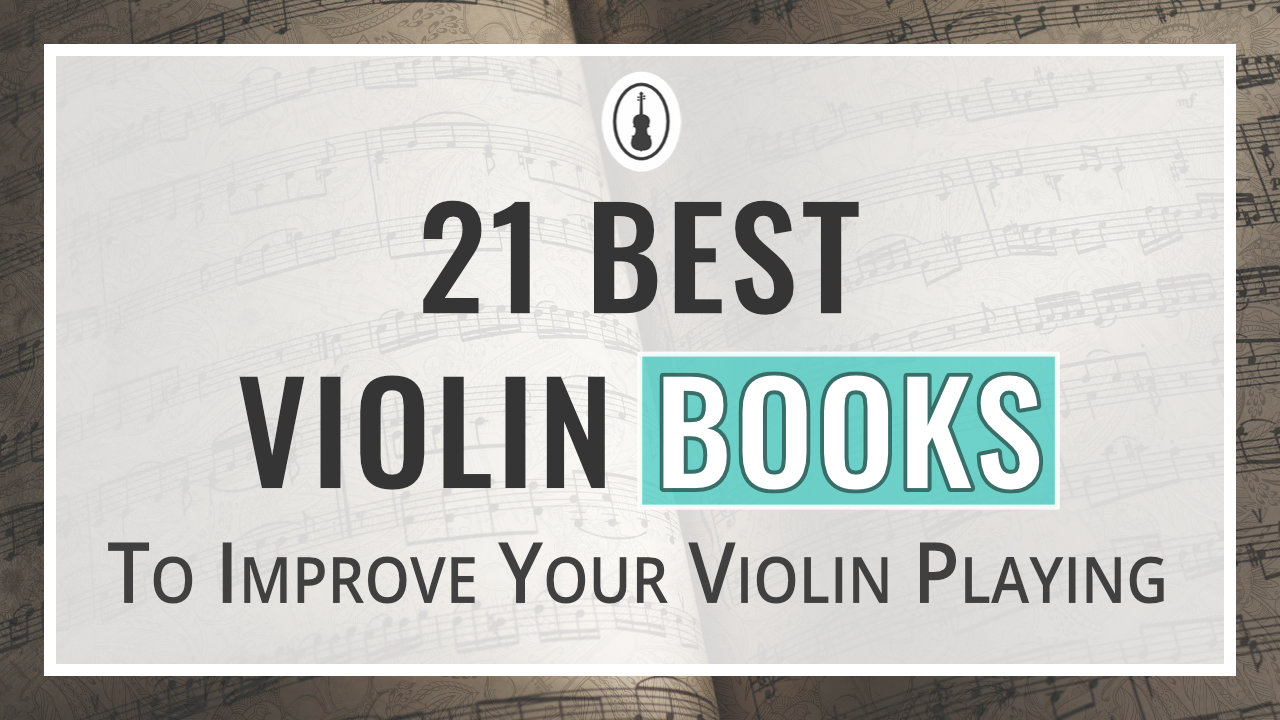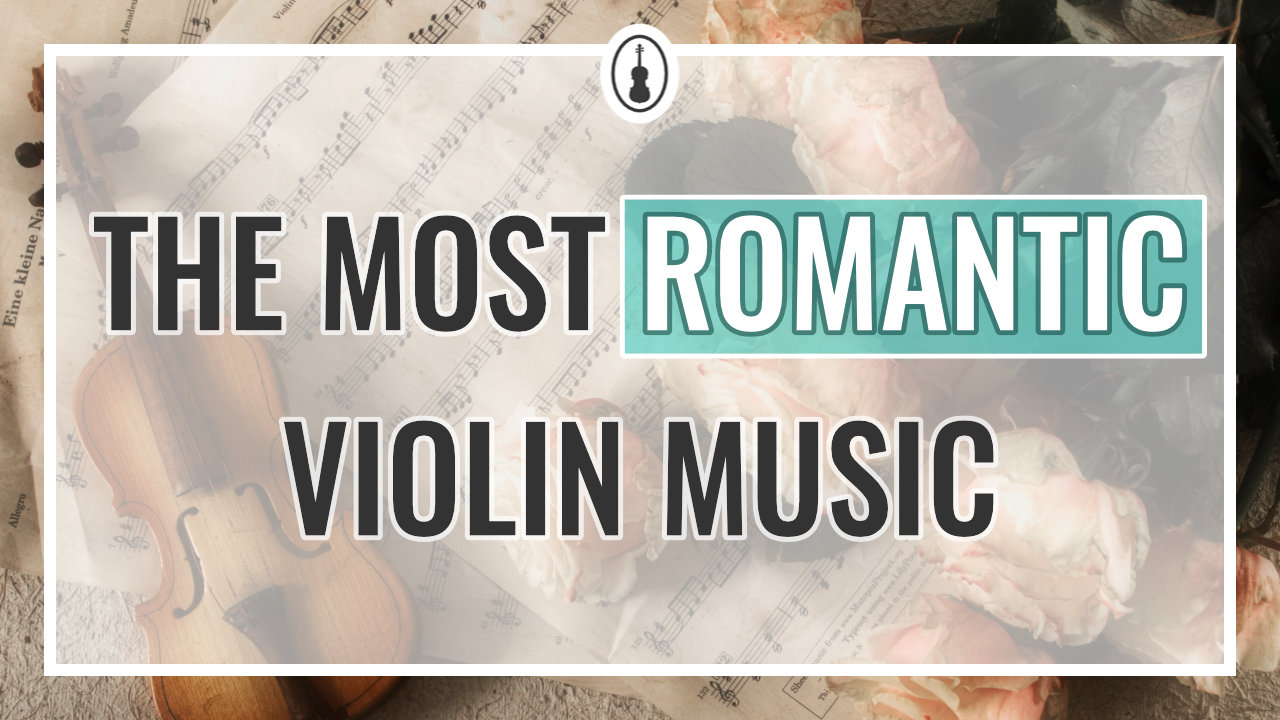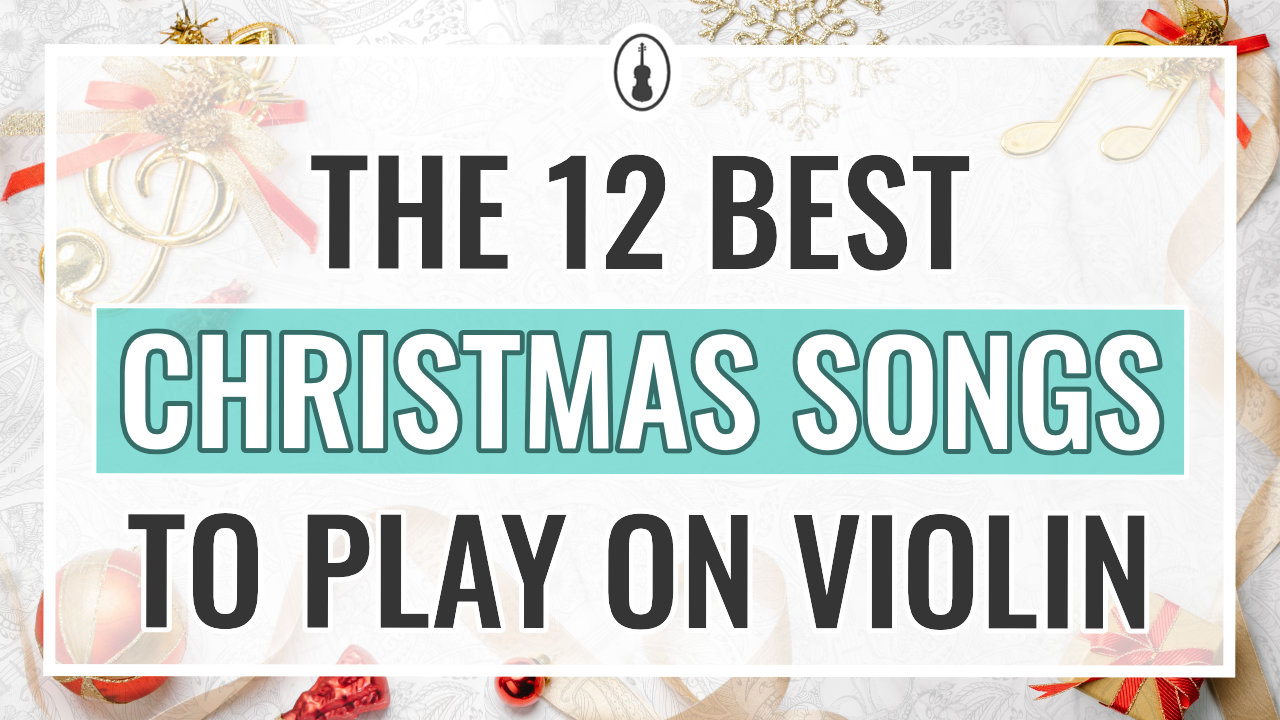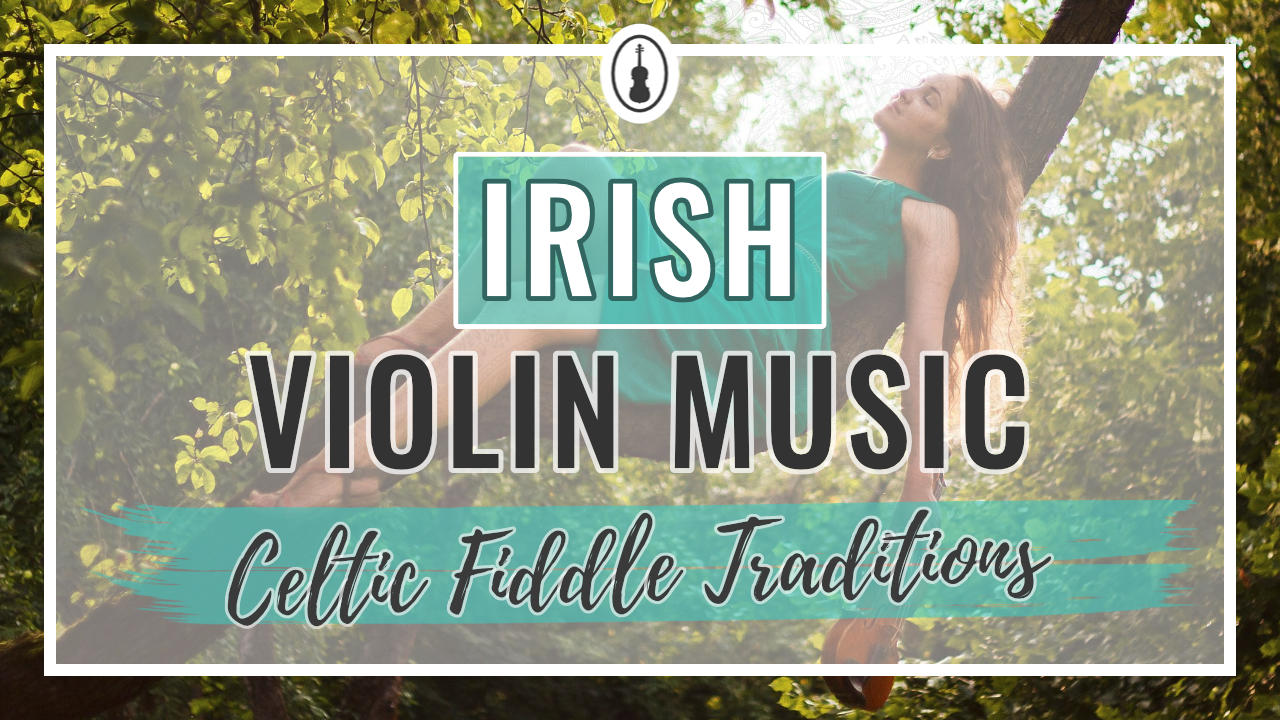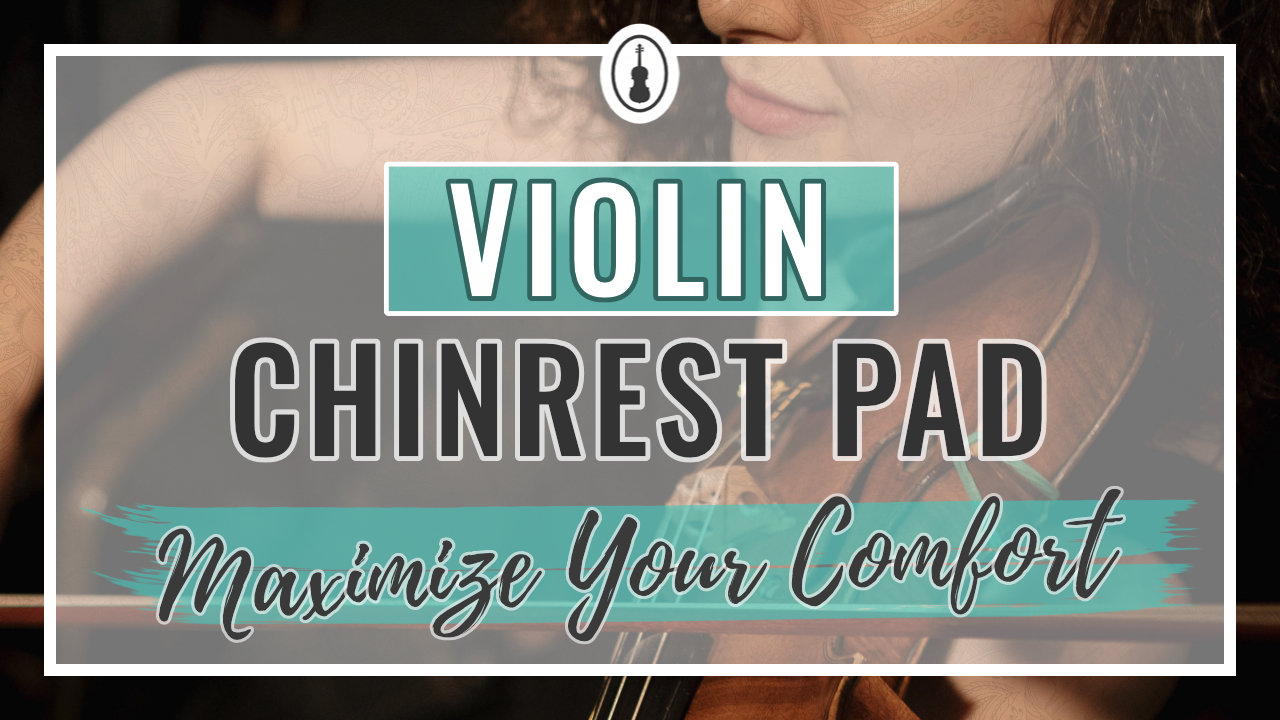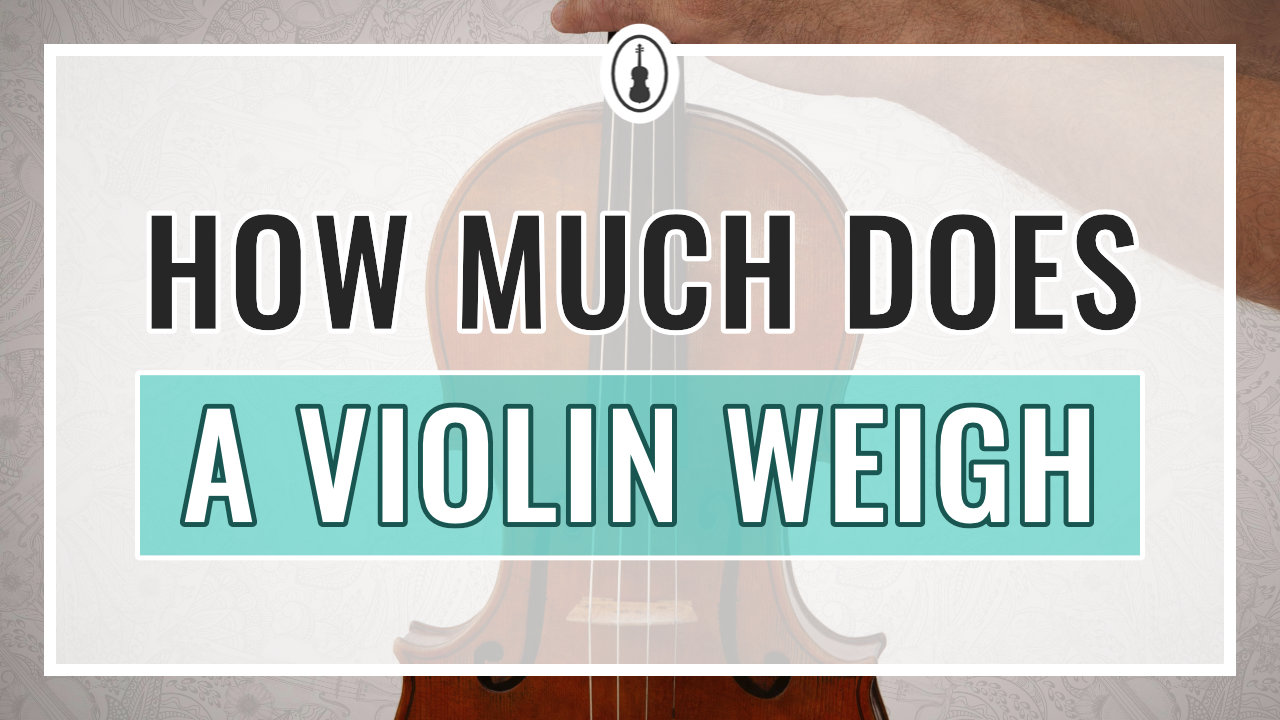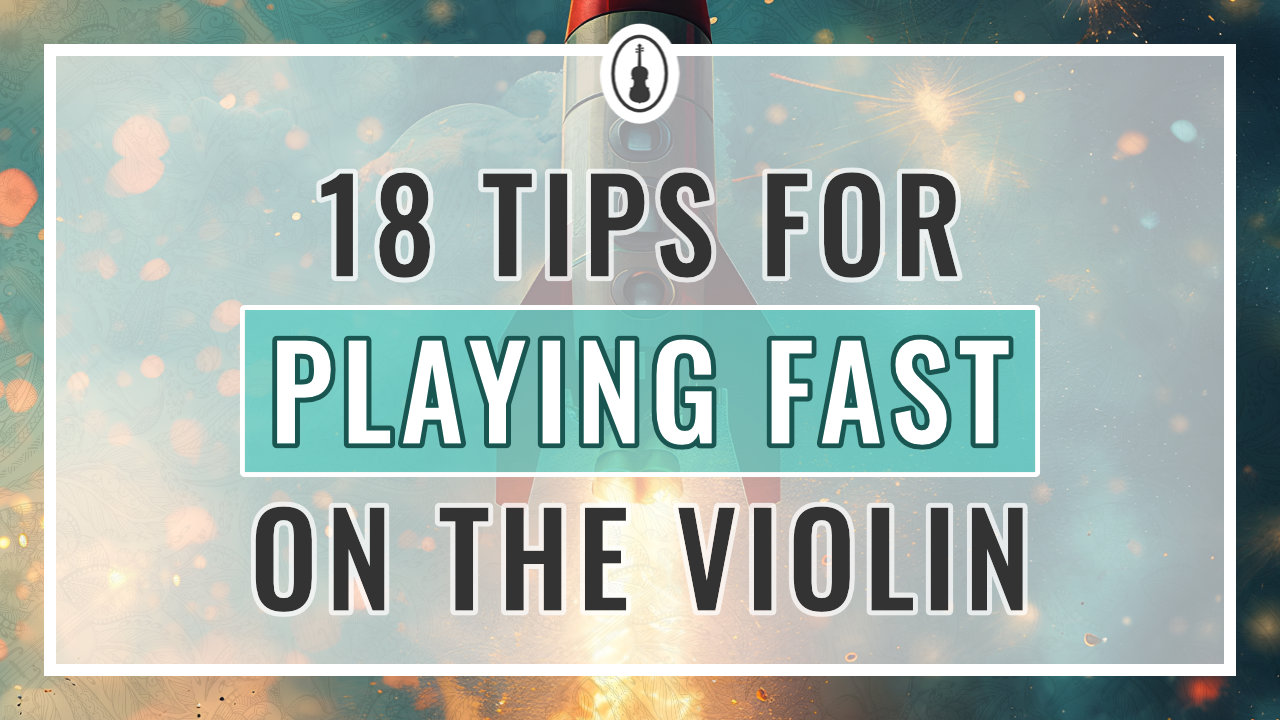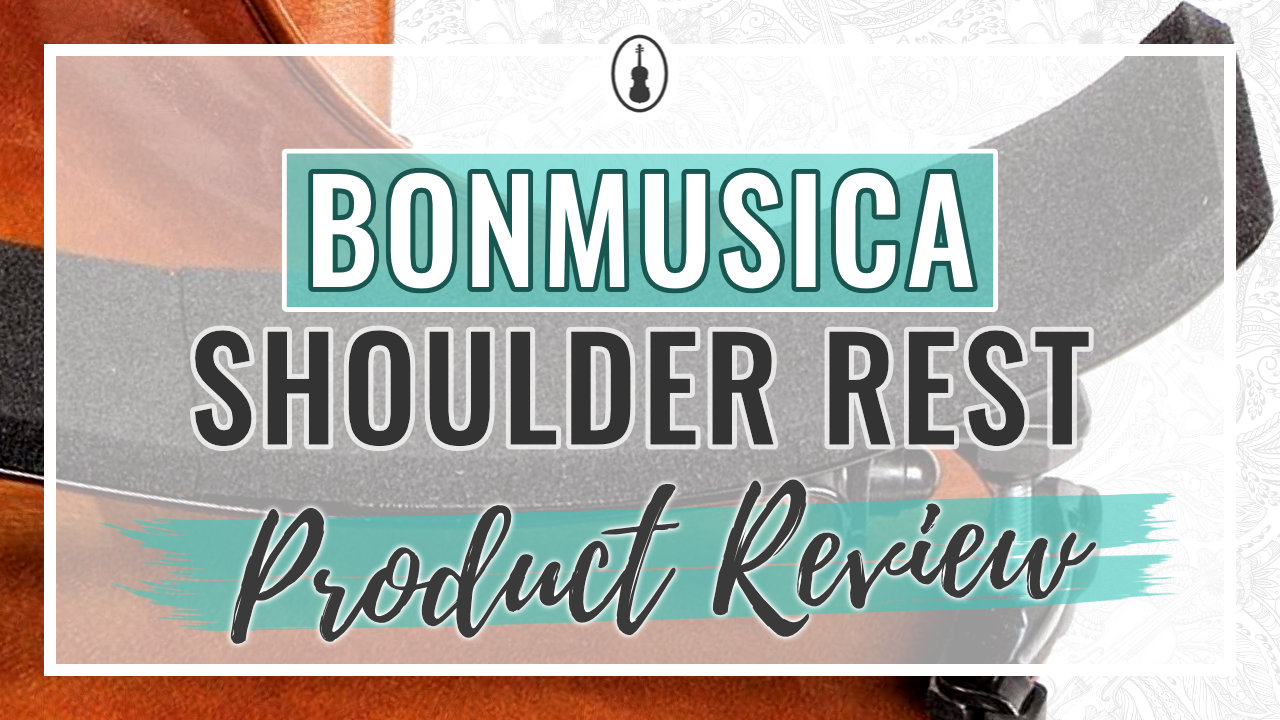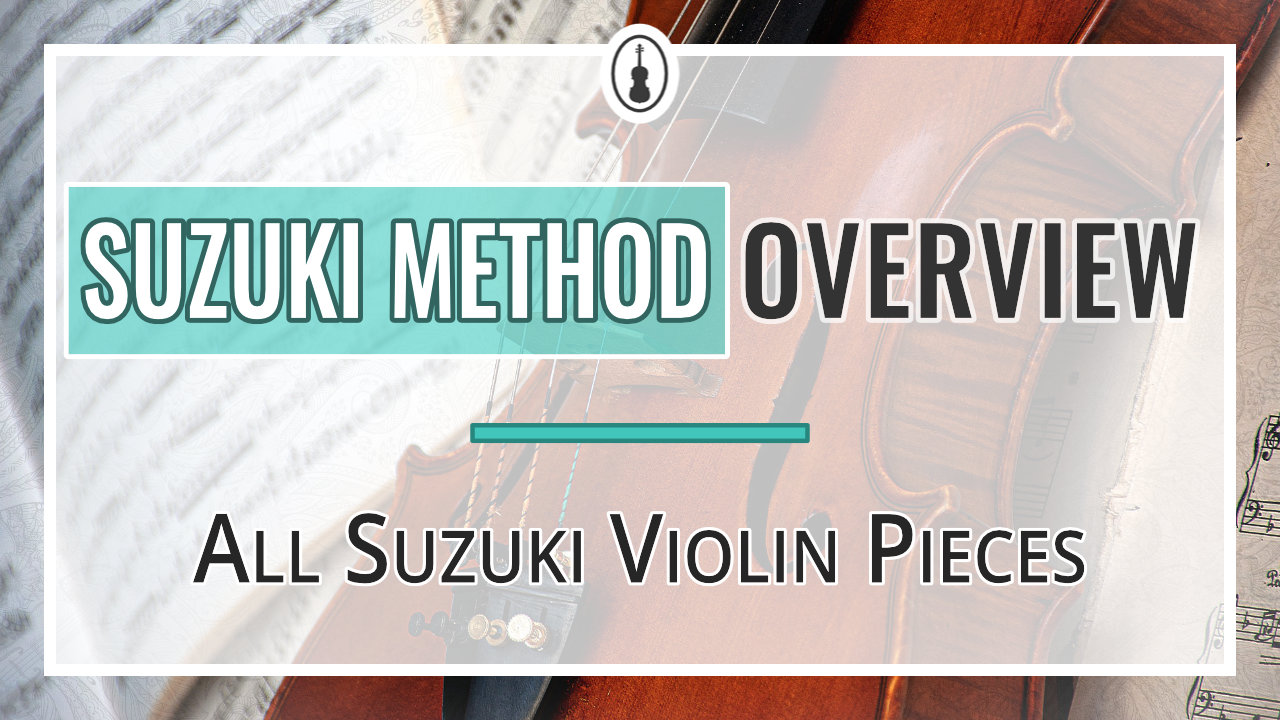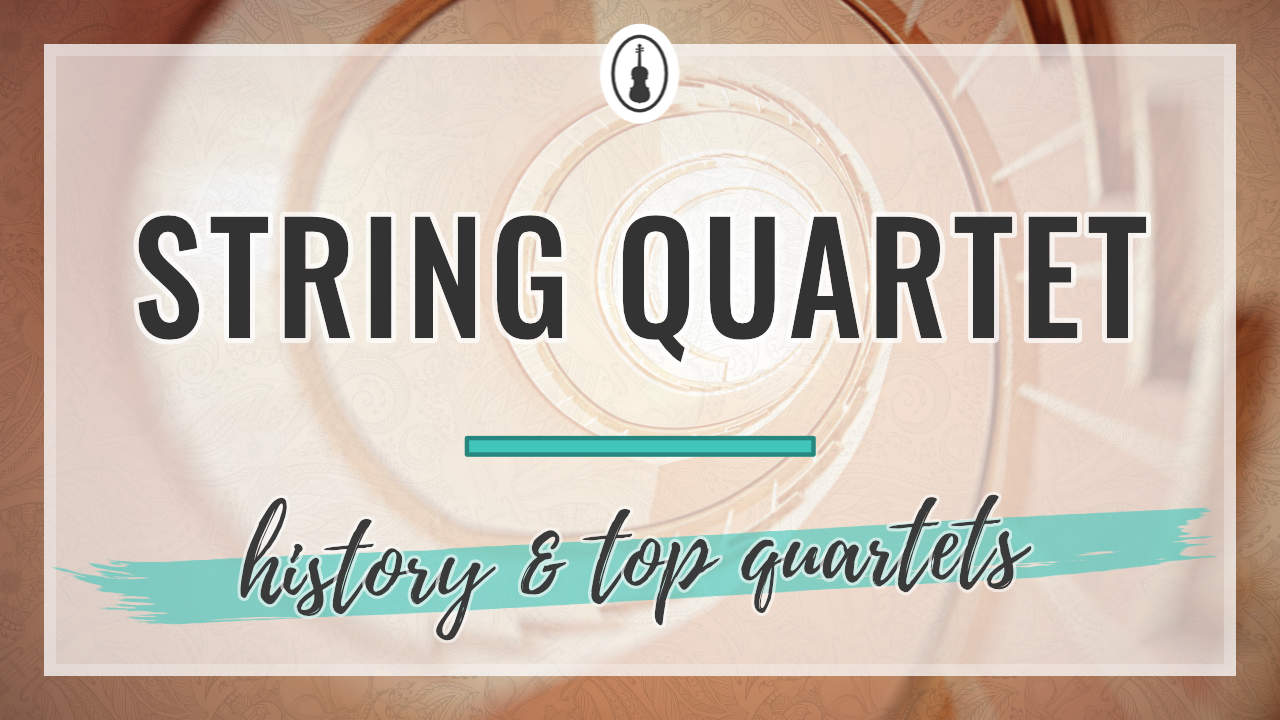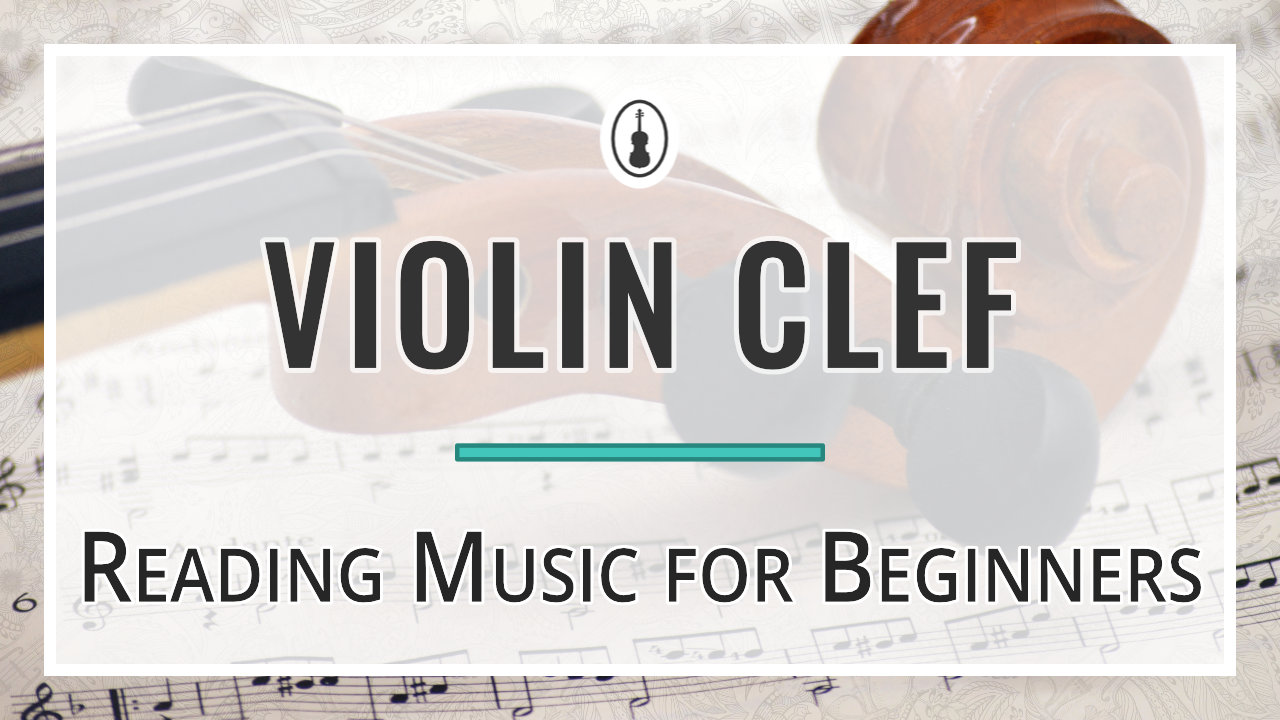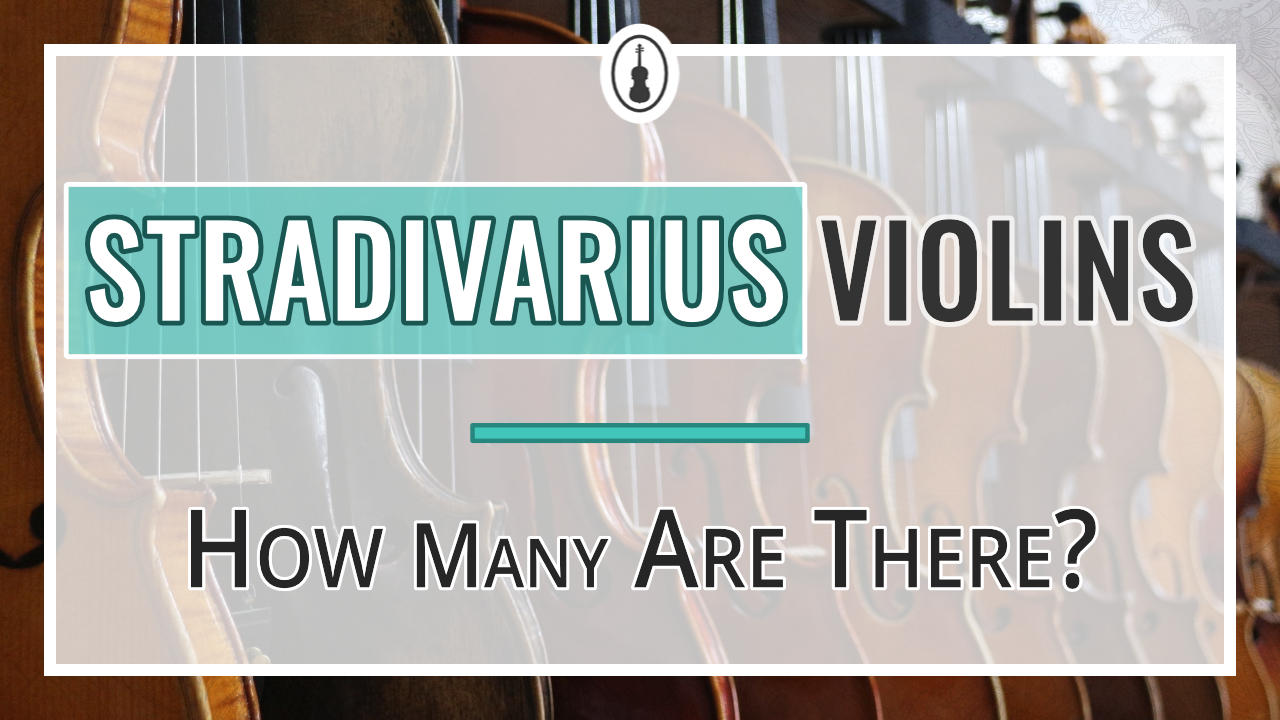So you’d like to learn to read violin notes? I hear you!
Learning how to read sheet music unlocks a whole new world on the violin.
Imagine what it would be like if you could put a random piece of sheet music on the music stand – and start playing!
Learning to recognize notes is not as hard as some may think.
If you only know a few key concepts about note reading, you’ll be able to recognize most notes on the violin.
And if you keep practicing, you’ll eventually even be able to sight-read. This means reading the notes while you’re playing.
Are you already getting excited about learning violin notes?
Keep reading to learn everything you need to know about reading sheet music on the violin.
How to Read Violin Notes for Beginners
Step 1: Learn the Staff Layout
The first step to reading violin notes is understanding the basic symbols.
The Staff
First of all, let’s have a look at the staff:
- The staff is the foundation upon which you can draw notes.
- The staff consists of five lines and four spaces.
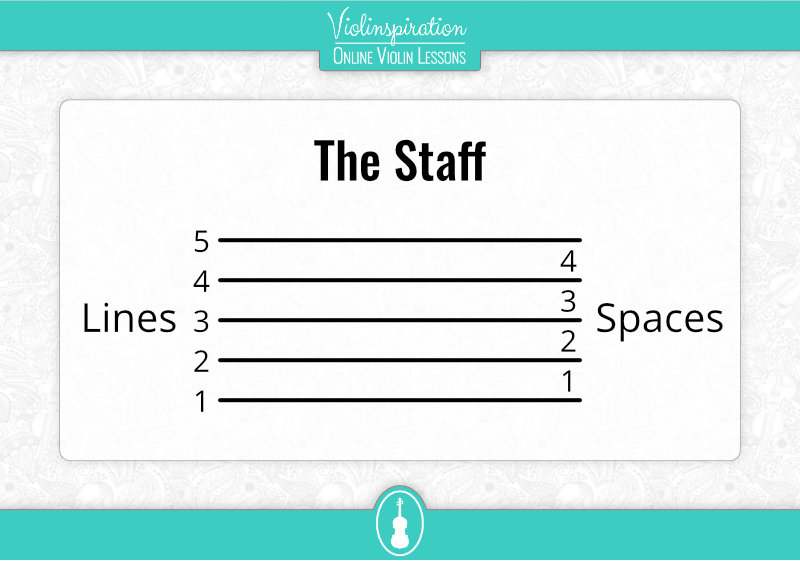
- Each line or space represents a note on the violin.
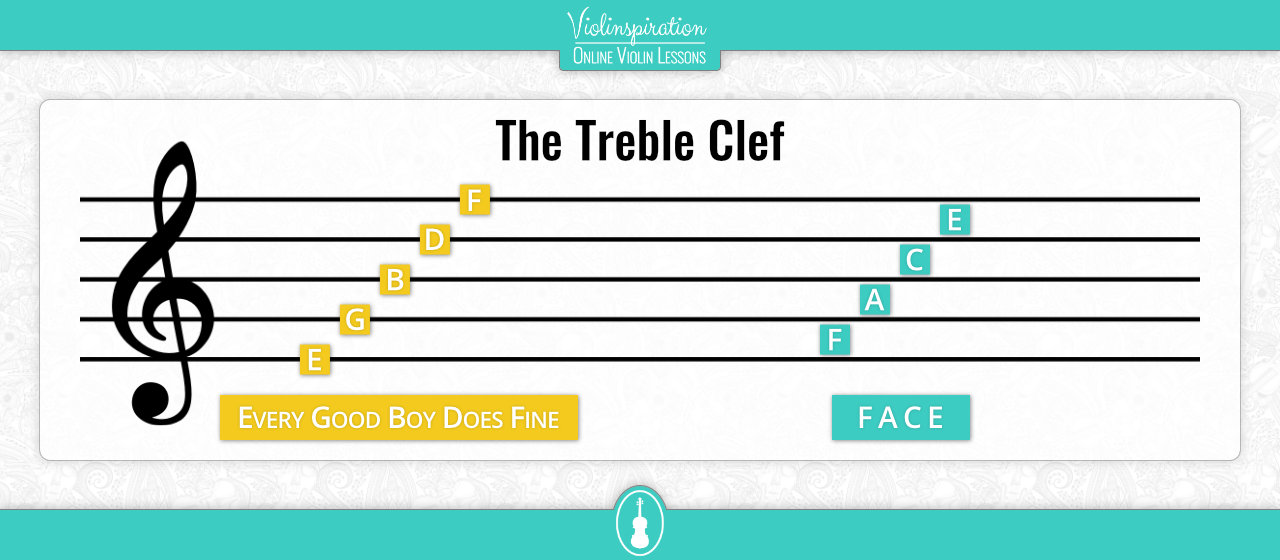
Bar Lines
Bar lines divide the staff into measures (also called “bars”).
Here you can see an example of a staff that is split into two measures by one bar line placed in the middle:
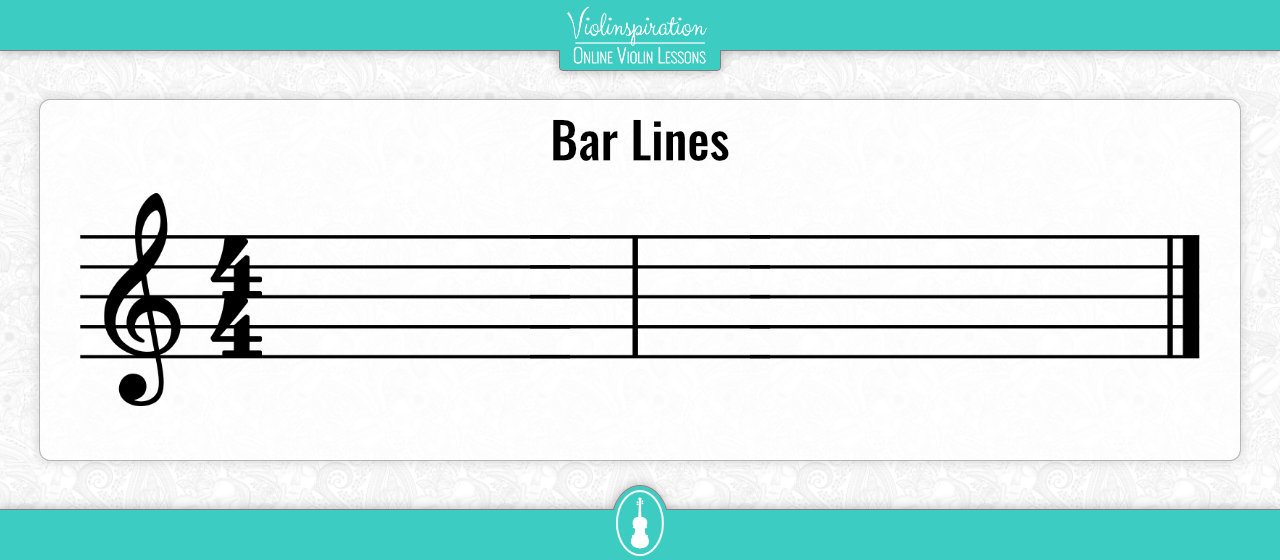
Bar lines help us keep track of where we are in the violin music, and to keep the right timing.
The Treble Clef
The treble clef is also sometimes called the G clef. Note that the shape of the treble clef itself resembles a stylized G.
The staff that the treble clef wraps around represents the G.
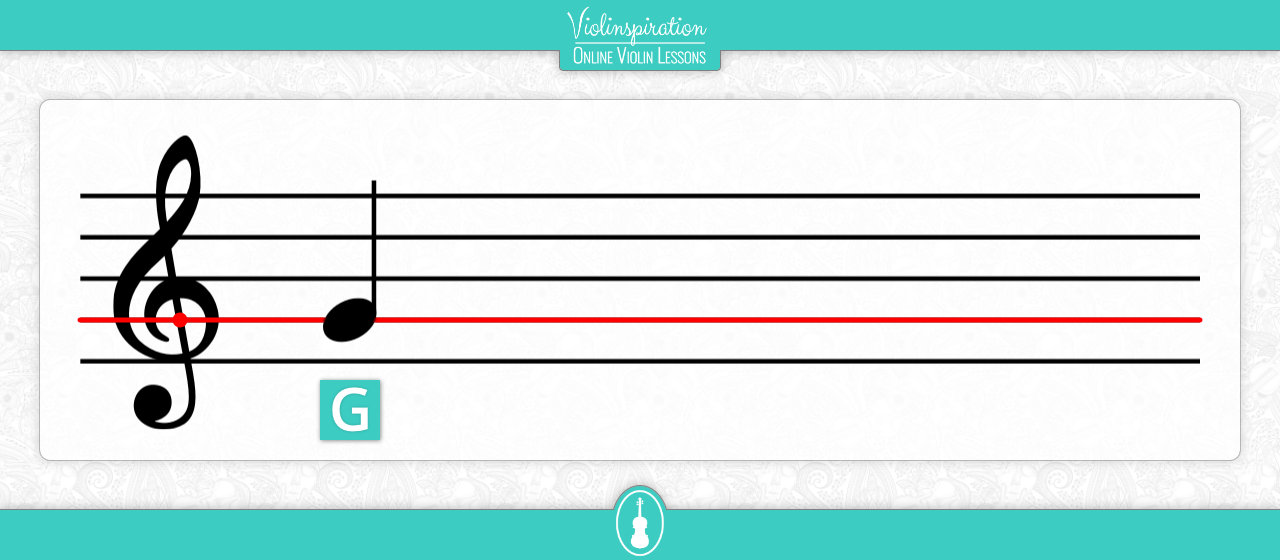
You might have seen other musical clefs as well, but luckily, there is no need to learn them as a violinist! All violin music is always written in the treble clef.
Music notes are named after the first seven letters of the alphabet: A, B, C, D, E, F, G. Each line or space represents one of the notes.
After the note G, there is another set of the same 7 notes.
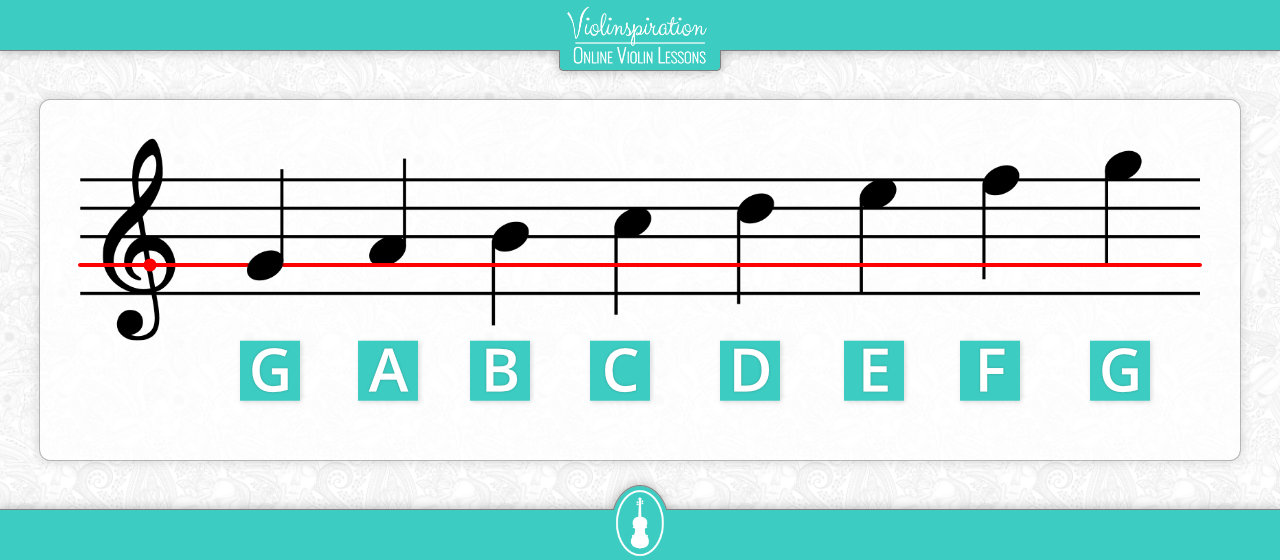
Ledger Lines
Have a look at the last note of my last image. Do you see that after the last “G”, there is no extra line to put a note upon?
To solve this problem, we can create “ledger lines”. A ledger line is a short line used to write notes which would otherwise be too high or too low for the staff.
Have a look at the new note we added to the following. The last A in this image has a “ledger line”.

We can also add ledger lines for notes that are too low for the staff.
The Key Signature
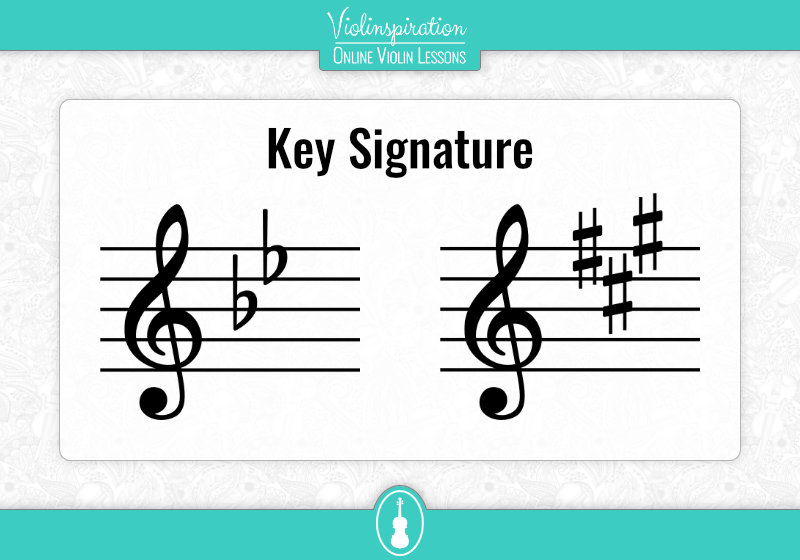
A key signature is a set of sharp (♯) and flat (♭) symbols placed on the staff at the beginning of a section of music. It tells the player which key the song needs to be played in. The key affects where we need to place a finger.
For instance, in the A Major key we are using a high second finger on the A string, whereas in the C Major key we are using a low second finger.
The theory behind key signatures is a little challenging and is not important for a beginning violinist to fully comprehend yet. For now, the only thing you need to remember is that the symbols next to the treble clef are called a “key signature”.
If you want to learn more, check out my simple guide to violin key signatures.
Step 2: Learn the Note Names
Now that you know the basics, we will learn to read our first notes!
The Open Strings
As we already know, each line and space of the staff corresponds to a note.
There are a few notes that are particularly important for violin players because they are the open string notes.
The note names of the open strings on the violin are: E, A, D and G.
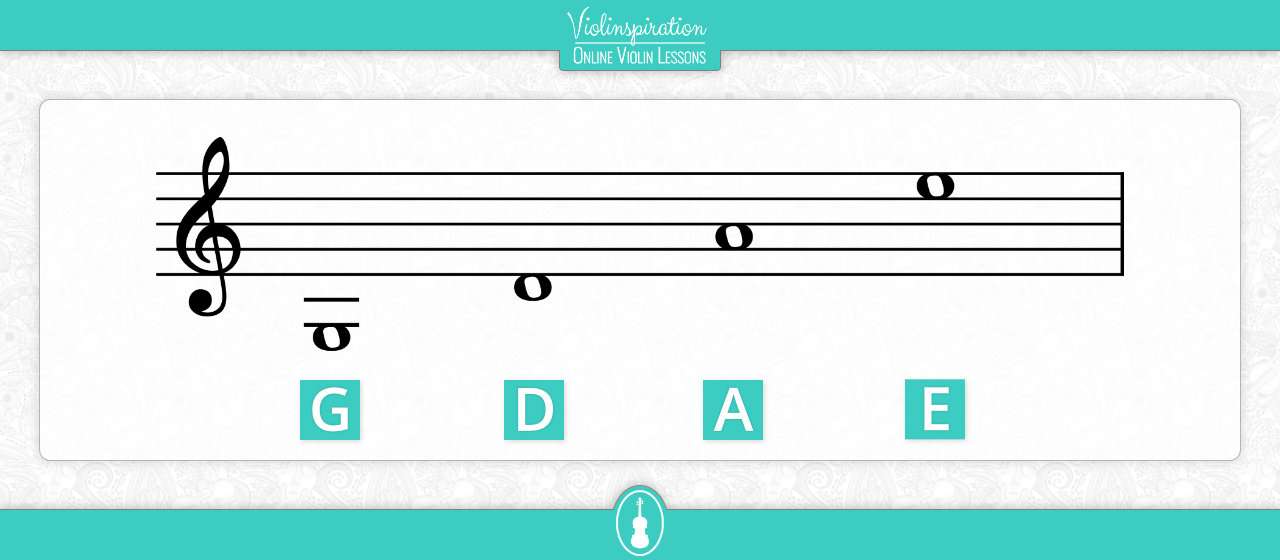
Here is a video lesson in which I show the notation and play an example of each one of the open string notes:
Now look at the following image and memorise the notes as well as you can before you read onwards:
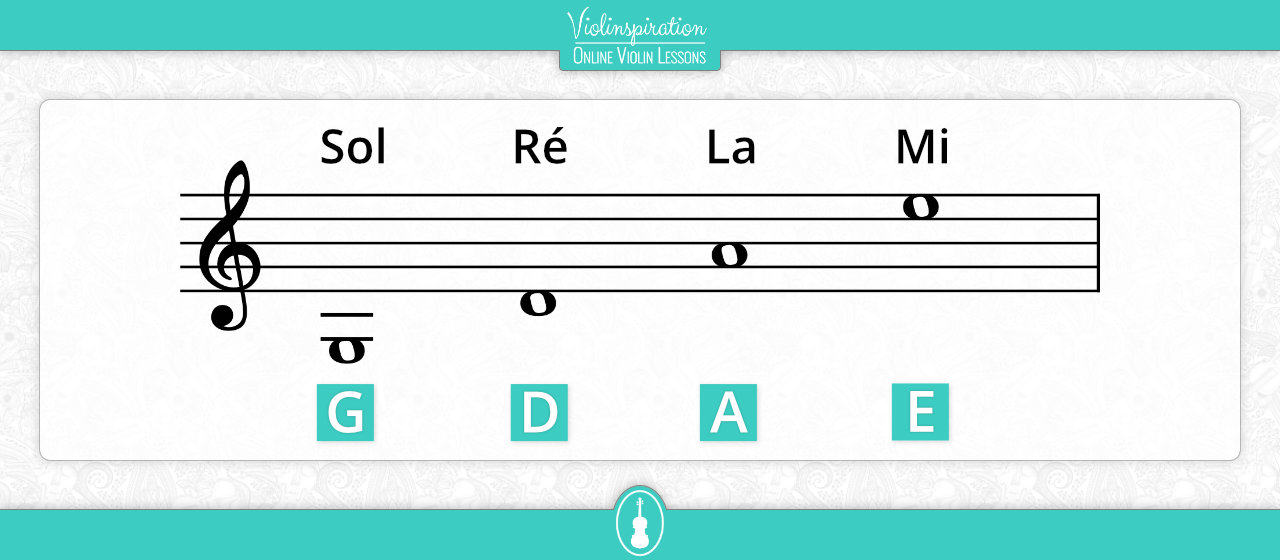
Did you memorise all the notes? It’s time to test yourself!
Watch the following video and try to remember the notes:
Were you able to recognize all the notes? Great! You can now move on to the next step.
The Notes of the Fingers
Now that you have learned to read notes on the open string, it’s time to understand how to read all the other notes.

As we know, each line or space on the staff represents one note. The notes are placed on the staff in the following order: A, B, C, D, E, F, G. After the note G, there is another set of the same 7 notes.
With this information, we can fill out the other notes.
Starting at the G, the note one above G will be A. The note on the line above that is a B. When continuing like that, you can quickly fill out all the other notes.
If you want to learn the notes on all strings, check out my post “All Violin Notes for Beginners [with Easy PDF Charts]“.
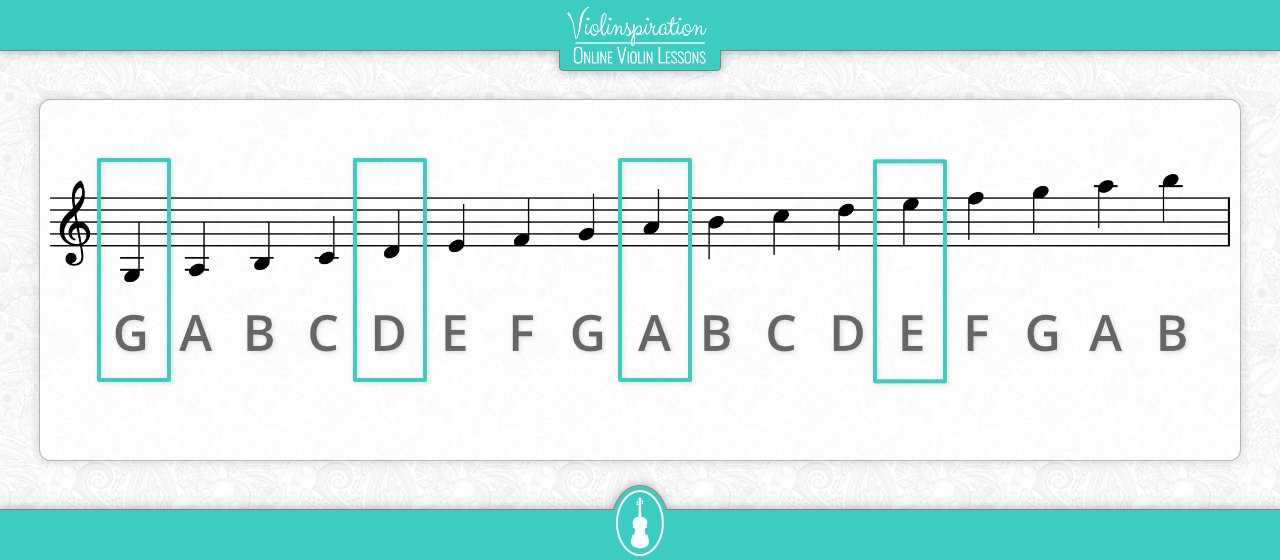
Reading the Fingering Above the Notes
When playing the violin, we usually do not only talk about the note names, but also about the fingering.
Naming the fingers is very simple to do.
Every finger on your left hand is assigned a number, except the thumb. The thumb does not have a number, because we use the thumb to hold the violin.
The index finger is given the number 1; the middle finger is given 2; the ring finger is given 3; and the pinky finger is given 4.
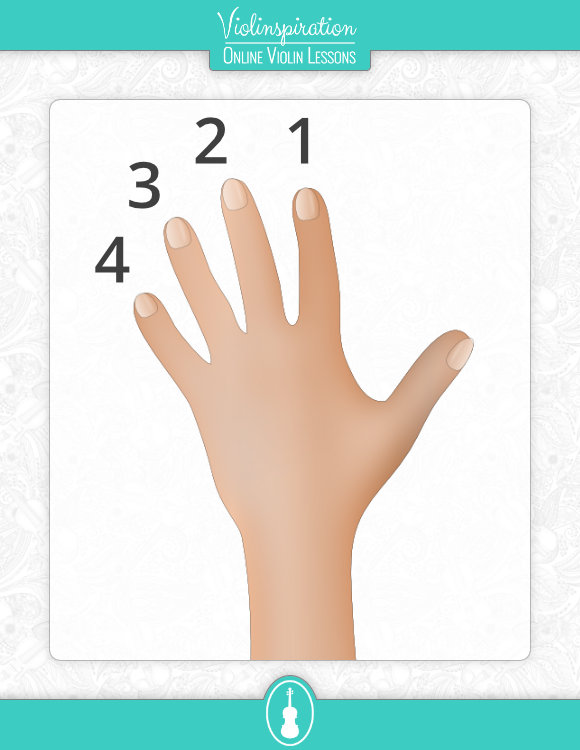
The open strings are played with only the bow and no fingers. That is why we usually use the number 0 to let the player know an open string needs to be played.
The first note above the open string is played with the first finger or index finger. The note above that is played with the second finger.
This way you can quickly figure out which finger you are supposed to play a note with.
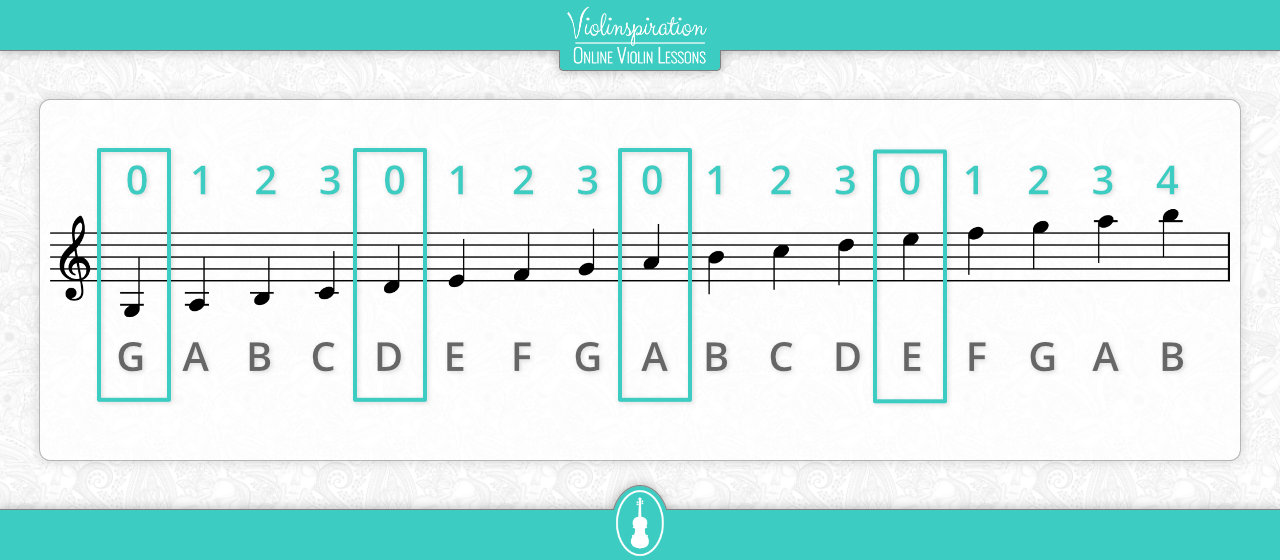
How to Read Easy Violin Tabs
In some sheet music on my site, I added violin tabs.
Below the notes, you can see a letter that represents the string you will be playing on.
Above the notes, you will see numbers. These numbers represent which finger you have to put on the string. If the number is zero, it means that you will have to play an open string.
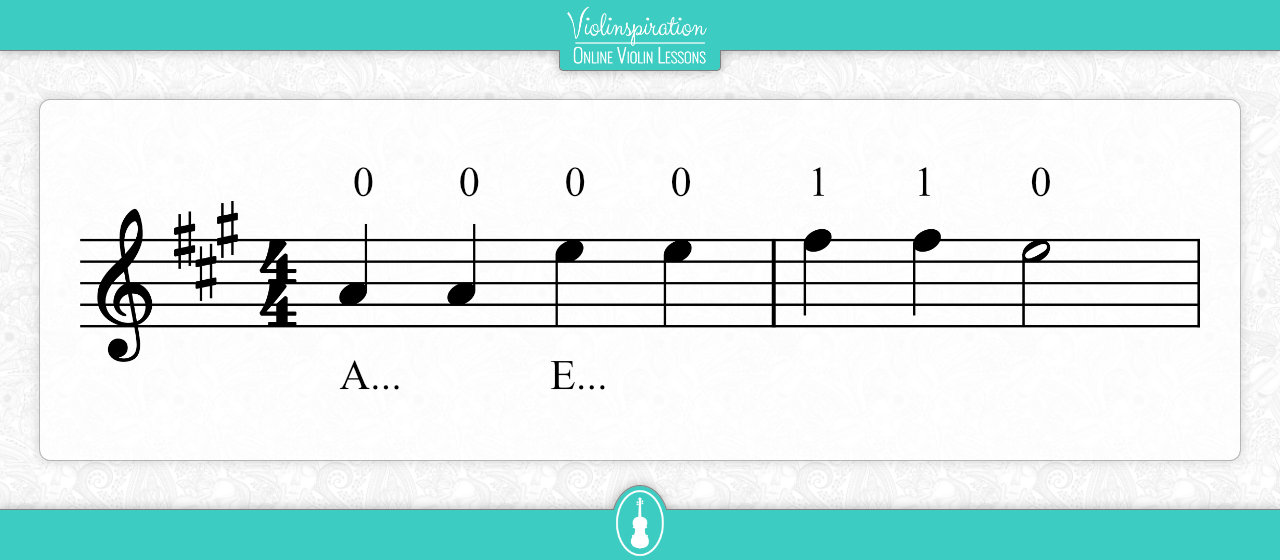
Note Chart: All Violin Notes in First Position (PDF)
Here is an easy overview chart of all the violin notes in first position.
You can download a printable PDF version of this note chart below for free:
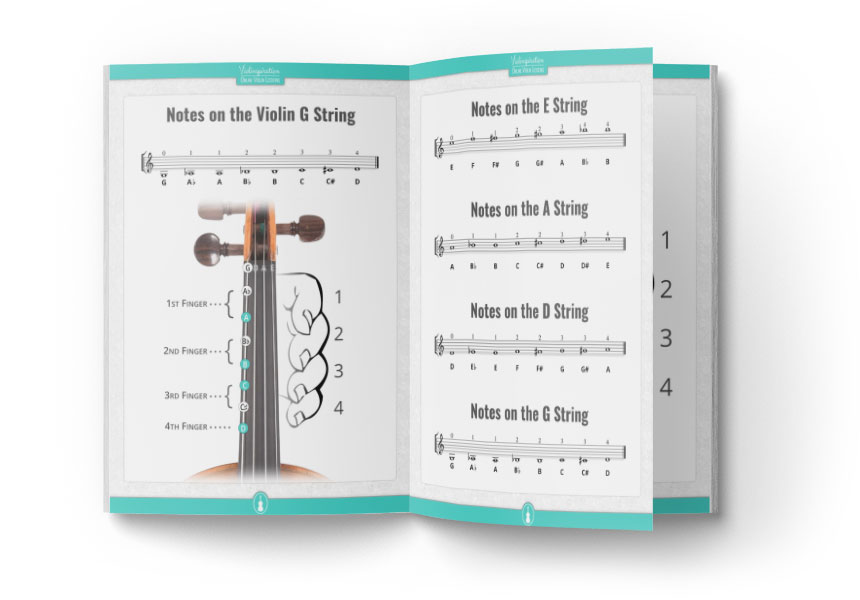
Get your free
Charts of All Violin Notes
in First Position
Step 3: Learn Rhythm
Violin music is made up of different kinds of notes that show us how long the sound will last.
Each type of note has a different note duration. Let’s have a look at the most common note durations. If you learn these note lengths, you can play almost every beginner song.
The Note Lengths
First of all, let’s have a look at the whole note. Here you can see what a whole note looks like:

The whole note has the longest duration of all notes. It has a note length of 4 beats.

Half notes have half the duration of whole notes and look like this.

The quarter note is a fourth of the length of a whole note and looks like this.

Notes smaller in duration than a quarter note have flags. Each flag halves the value of a note. An eighth note has one flag and is half the length of a quarter note.

A sixteenth note has two flags and is half the value of an eight note.
Some notes have more than two flags, but you usually won’t find them in beginner violin songs.
Here is an overview chart of all the violin note lengths:
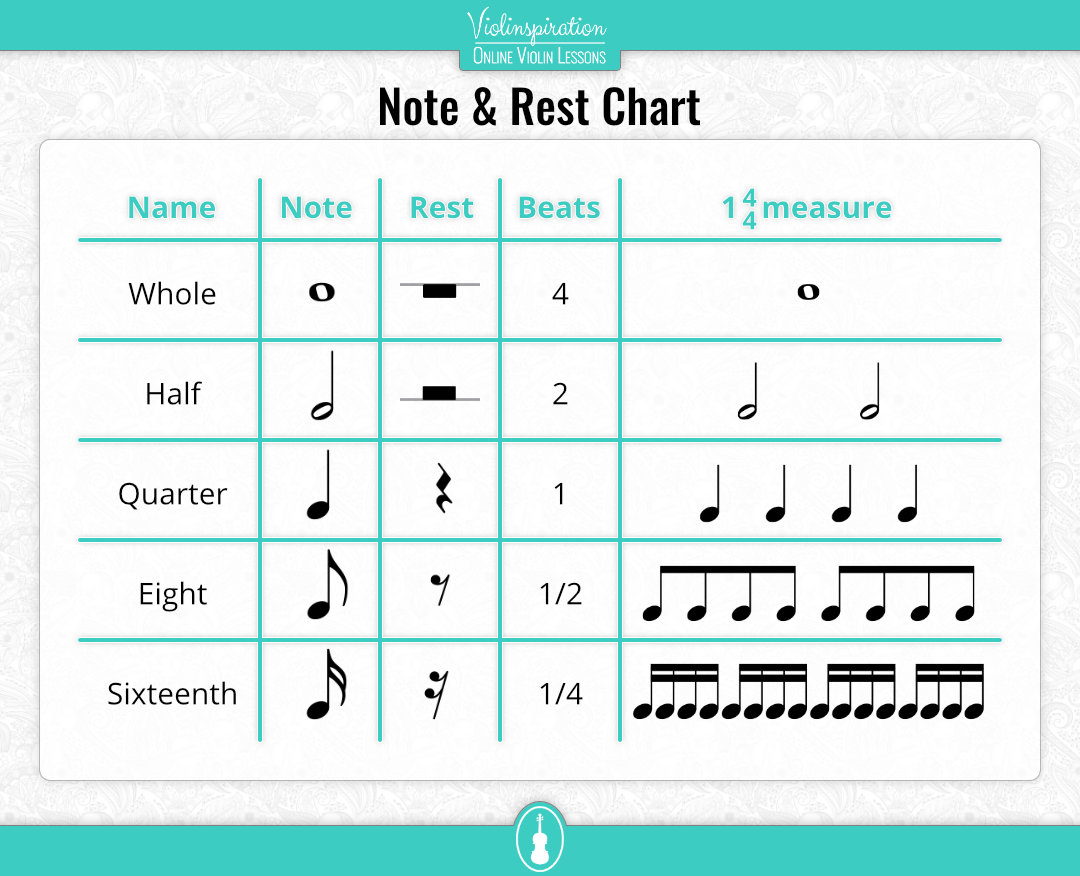
You may still wonder how to play the notes, what’s their length and how to count the beats. I explain it in the video below:
Step 4: Practice with Beginner Violin Sheet Music
Are you still confused about learning notes even though you have been reading up on all the note theory online? Don’t worry – that is totally normal!
Learning how to read music notation is like learning a language. Even if you read an overview post with “all the words” and “all the rules”, you still won’t be able to speak a language!
If you truly want to be able to read notes, you don’t want to only learn the theory. The goal is that you’ll be able to see the violin sheet music and be able to sight-read all the notes.
That is why it’s never too early to start practicing note reading with easy, beginner sheet music.
I highly recommend downloading the free sheet music from my book “The Ultimate Songbook for Violin Beginners”.
In this book you will find a range of easy songs, written in simple time signatures, keys and rhythms. It is excellent for a beginning violinist who wants to improve his or her note reading skills.
Download it for free below:
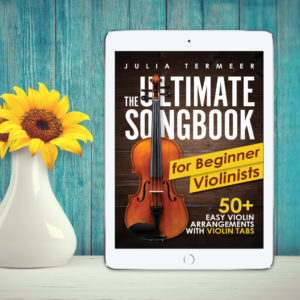
Get Free Ultimate Songbook
for Violin Beginners
Step 5: Learn the Bowing Symbols
If you start to practice with reading violin sheet music, you will notice that some notes are marked with special symbols. These markings tell the violin player which bowing techniques to use when playing the notes.
Learning the bowing symbols is another important step in interpreting violin sheet music!
Here are a few of the most common bow markings to get you started:

Legato bow stroke
Playing notes legato means playing them smoothly and connected. In other words, you’re playing with no interruptions between the notes.

Martelé bow stroke
Detached from other notes, the martelé bow stroke has a strong accent or bite at the beginning of the note. You can do this by adding a bit of pressure with your index finger.

Up-bow & Down-bow Staccato
Multiple short and detached notes that start with a bite or accents and are all played in one bow direction are called up-bow or down-bow staccato.
3 Tips to Learning Music Notation Quicker
If you are currently a beginner violinist, chances are that you would rather play on your instrument than learning more about music theory. That is why learning music notation effectively is key!
For this reason I will end my post with a few tips that will help you to learn to read notes more effectively!
Tip 1: Introduce a few notes at the time
The best way to practice notes is to not overwhelm yourself with learning all the notes right away. My students always get the best results when we practice note reading step-by-step.
So how will you go about this?
Start with only learning the open strings and quarter notes. Then, slowly introduce more notes and note values as you go. Each time you have learned the new notes and note values, you can add another note value or note to the mix.
Tip 2: Practice with sight-reading from the start
The important thing about this approach is that you need to apply each piece of new knowledge! So as soon as you learn how to sight-read open string notes, be sure to practice playing some rhythms on open strings.
Each time you introduce new notes, I recommend playing exercises and songs with these notes.
Tip 3: Try out my step-by-step note reading course
If you are willing to invest in your violin education, I highly recommend trying my course “Note Reading for Violinists“. This is my step-by-step course to learn how to sight-read notes, available at my online violin school: Julia’s Violin Academy.
In this course, you won’t only learn the “theory” behind notes. We will practice sight-reading, bowing signs, and rhythm with easy exercises in each class!
After following the course, you will be able to sight-read all notes and rhythms in first position. Also, you will be able to understand the most common bowing signs.
Not a member of Julia’s Violin Academy yet? You can try it out for 30 days at no risk. Click here to sign-up and work with my Note Reading course!
Last Note
When you learn to play the violin, there are so many new skills to acquire: holding the bow, learning bowing techniques, the left-hand technique, and learning your first violin songs. Learning to read violin sheet music is definitely another skill to add to that list!
Learning these things will make your experience of playing the violin so much more enjoyable.
I can’t tell you how much fun it is to get a random piece of sheet music – and start playing! It is one of my favorite things.
I hope this post gave you all the basics you need to get started sight-reading fun violin pieces as quickly as possible!

Get your free
Charts of All Violin Notes
in First Position

